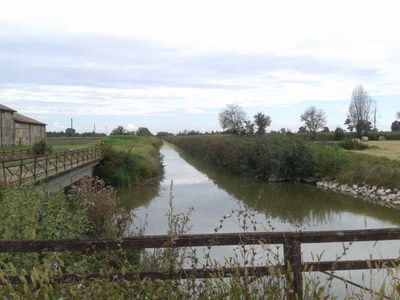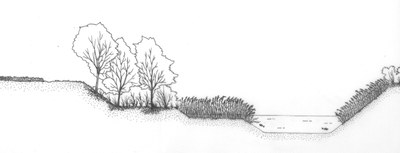LIFE RINASCE Project

The LIFE RINASCE Project, approved by the EC in July 2014, aims to made demonstration purposes for environmental hydraulic restoration of some Emilian drainage canals.
Promoter of this is the Central Emilia Reclamation Consortium in collaboration with the Emilia - Romagna Region. The total funding of the project amounts to around € 2 million.
The LIFE RINASCE project has the overall aim to show that the key concepts of the Water Framework Directive 2000/60 / EC and the Floods Directive 2007/60 / EC, may also be applied on the artificial water network, reducing the risk of floods and at the same time improving the ecological status of rivers. In this sense we will be experimented types of intervention to apply these concepts to the particular situation of drainage canals.
It should be noted that the Emilia plain is crossed by a dense network of canals built over the centuries by man for land reclamation: the artificial network water flows not only by gravity but also due to dewatering that allow the drainage of land places at the bottom of bank riverbeds. Malfunctions of such a distinctly artificial system can cause catastrophic damage and becomes essential increase of flood safety levels. At the same time the ecological rehabilitation of drainage canals is an important opportunity for the reconnection of the ecological network and the improvement of environmental quality.
The canals that were chosen for interventions suffer a similar extent of environmental and hydraulic issues. Currently, in fact, they are characterized by a straight course and geometric section of trapezoidal shape; there are no flood areas connected to them and excess flows are disposed of by pumping station. Furthermore, floodplains, if any, are granted to farmers for mowing of herbs. The presence of aquatic vegetation and river banks is still controlled by periodic mechanized maintenance operations by the consortium. A problem that should not be overlooked is that the development of the settlements in recent decades has further increased the capacities and undermined the efficiency of the consortium networks. In the case of Central Emilia Reclamation Consortium and the areas in which fall the considered channels, hydraulic recent studies reveal a high flood risk. Add to that the problem of waste treatment plants and flood spillways that pour into large canals amount of pollutants, worsening water quality.

Pict. 1 – The Collettore Alfiere canal (Photo: Central Emilia Reclamation Consortium)
Taken together, these actions involve the restoration of approximately 7 km of canals, by creating a 3-hectare natural floodable plains along the canals ("the river space"), the forestation of 2 km of canal banks, and the creation of a retention area that will become a naturalistic wetland for the accumulation of floods and water phyto depuration about 3 hectares wide.

Pict. 2 – Widening canal section (drawing: Massimo Milandri)
It is therefore now under way a reflection on the part of the competent authorities on how the transformation of this artificial system, to assess whether one of the ecological criteria based on water management can give better results in terms of reduction of the hydraulic risk, by virtue of the fact that today the problem of floods is far from being solved and indeed in many cases it is exacerbated and the frequency and intensity of floods in Europe and in Italy have increased.
The project aims also to develop and apply methods of "gentle handling" of aquatic vegetation and riparian channel, comparing different cutting methods in relation to ecological, hydraulic and economic effects (in terms of maintenance costs).
The essentially innovative character of the LIFE RINASCE project is given not only by the prototypes of interventions designed to fix hydraulic and environmental issues, but also by the entire path design, which sees involved a technical multidisciplinary team and local actors involved through a " Participated Process."
Particular attention will be paid to the possibility of spreading the techniques tested with LIFE RINASCE project, and for this purpose it includes the organization of training sessions for technicians and demonstration days driven directly in the intervention sites.
